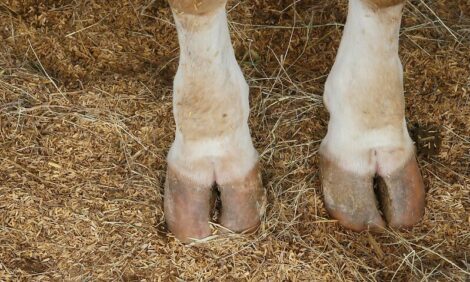



On-farm Biosecurity to Protect against Disease and Reduce Antibiotic Use
ANALYSIS - The use of biosafety practices and instituting biosecurity programmes can help reduce the use of antibiotics on the farm.The construction of new farms and the introduction of new farming practices can open up a new range of biosecurity risks.
And farmers have to be aware of the potential risks and be able to adapt their practices to reduce them and increase bioprotection on the far.
Speaking to dairy farmers at the recent EuroTier exhibition in Hanover, vet with Boehringer Ingleheim, Dr Regina Strie said that building new farms, bringing in mew stock present greater on-farm risks.
New production methods that are becoming more specialised mean that some farmers will outsource certain areas of production and this in turn brings with it risks of bringing biosecurity hazards onto the farm.
“If you go to another farm where there is a risk of disease, you run the risk of bringing that disease back onto your own farm,” she said.
“The more people you have coming on to the farm the bigger the risk there is of bringing viruses onto the farm.”
She said that one essential is that there should be clean boots and overalls for every new visitor to the farm.
Dr Strie said that dealers coming to the farm bring their own risks because they travel from farm to farm and they need to be made to take strict biosecurity measures to ensure they do not spread disease.
She added that cross border dealers present an even greater risk to the farmer.
“Animal movements in central Europe in particular are very high and they can cross borders without certificates,” she said.
“Not every truck that comes onto the farm that has visited other farms is neat and tidy.”
Dr Strie said that auctions and shows are also places where diseases can be spread because they are collection points and the animal’s immune systems have been disrupted by travel and by being in a strange environment.
She said that 40 per cent of infections in humans, the most common being salmonella, tuberculosis, para tuberculosis, Q Fever, Brucelelosis and Chlamydiose arise from contact with an animal.
One of the main biosecurity measures that can be taken is to prevent visitors entering the barn because any virus they might bring with them will stay in the barn and could infect a whole herd.
She added that protective garments are also essential.
However, she said that one of the most positive ways of preventing the spread of disease is through vaccination.
The main areas to enforce to ensure increased biosecurity are:
- Only purchase animals form farms where they have a certificate
- Clean transport vehicles thoroughly
- For cattle farmers in particular, avoid contact with sheep
- Do not let visitors into the barn
- Always provide visitors with clean overalls and boots
- Protect the herd through vaccination
“It is not just about animal health and welfare, there are economic reasons as disease in the herd will see the level of production go down and among dairy herds, birth rates will be low,” she said.
“Biosafety is important for cattle farmers. It is not just something for pig farmers and poultry farmers.
“But most importantly work with the vet and vaccinate to protect against epidemics.”






